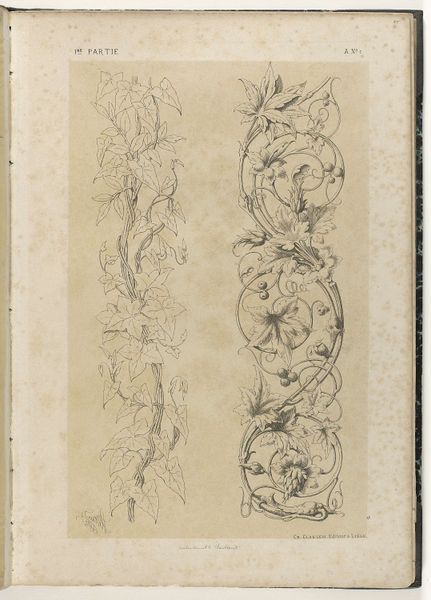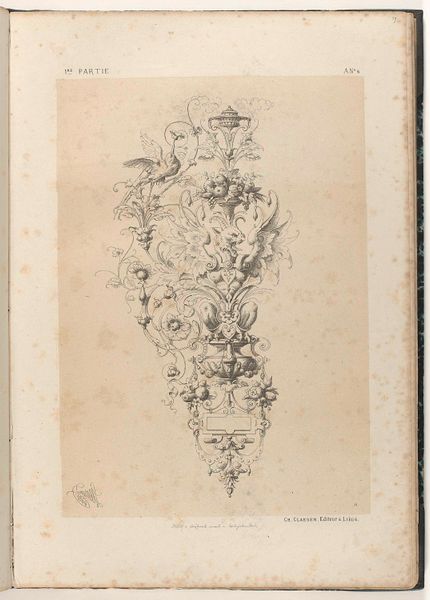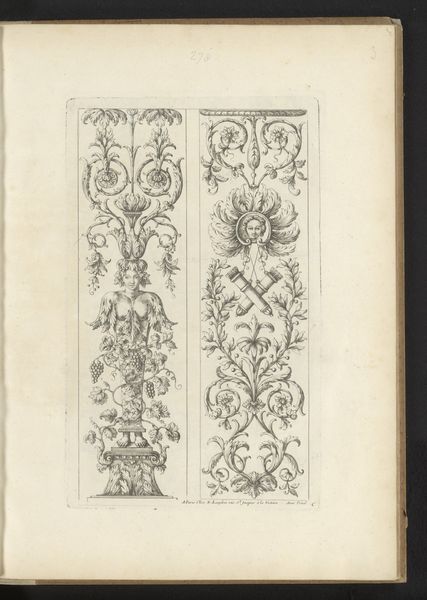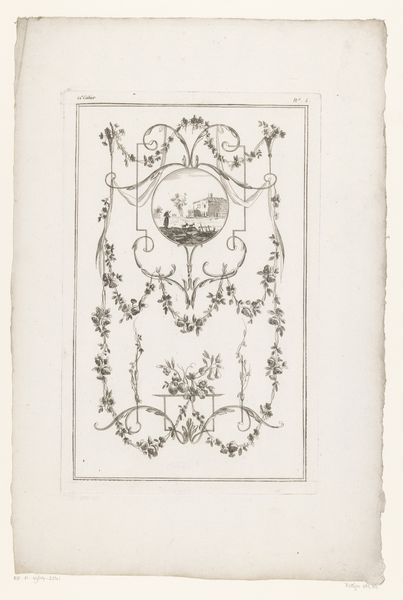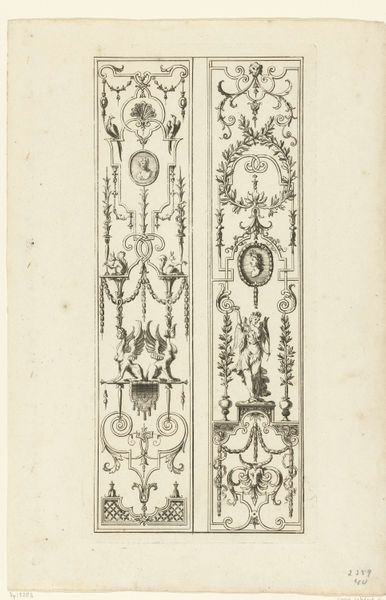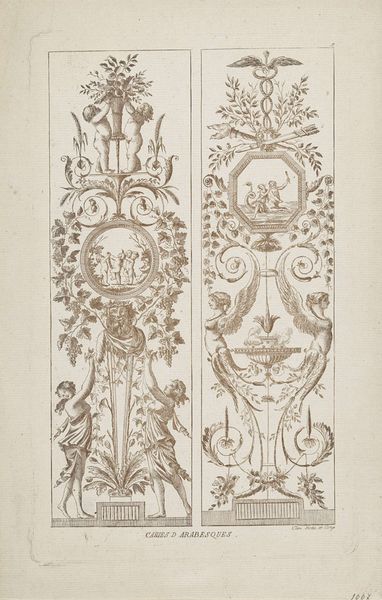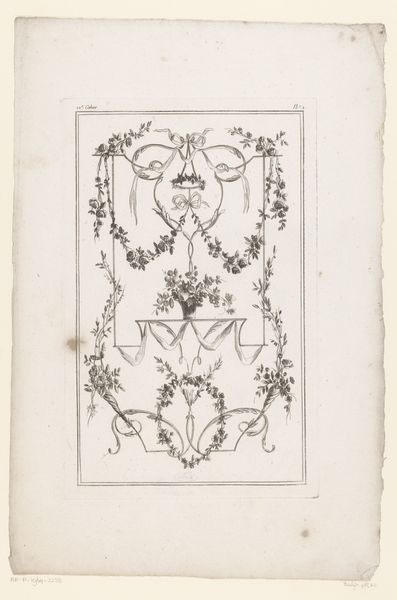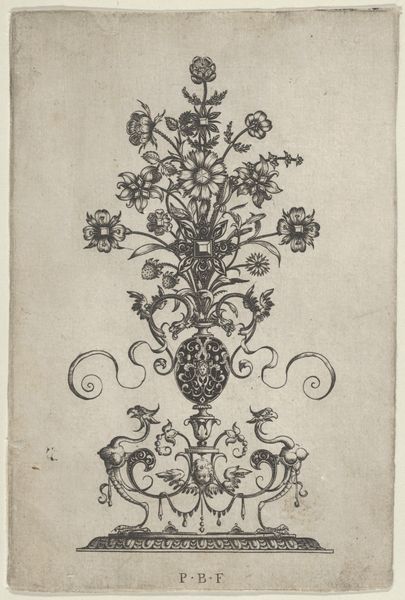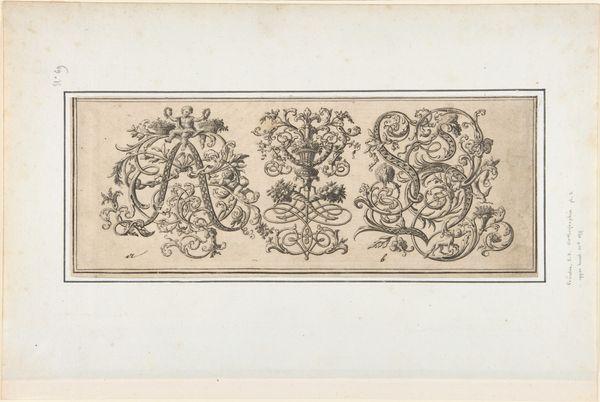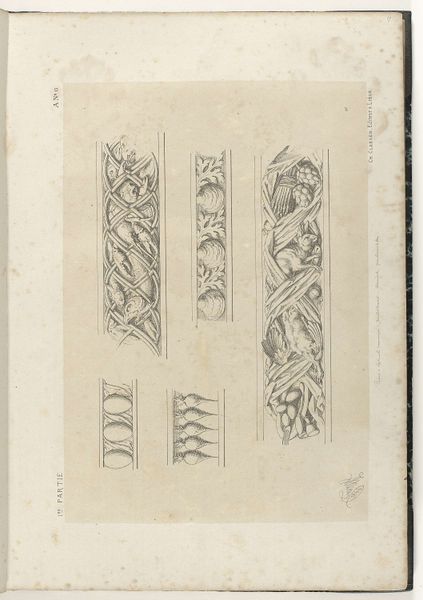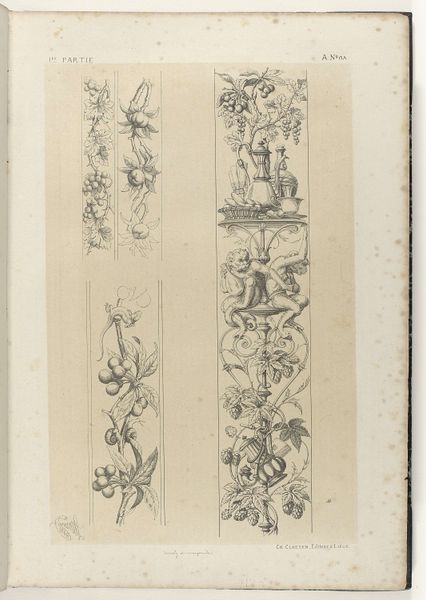
drawing, ink, pen
#
drawing
#
ink
#
line
#
pen
Dimensions: height 418 mm, width 290 mm
Copyright: Rijks Museum: Open Domain
Editor: This is "Drie friezen en een kandelaber," from 1866, made by Michel Liénard. It's an ink drawing, very linear in style. What strikes me is the combination of natural and artificial elements—wheat and grapes alongside a candelabra and what looks like a wine barrel. What can you tell me about this piece? Curator: These visual juxtapositions speak volumes about 19th-century societal values. Notice how the artist has framed natural bounty - grains and grapes, symbols of sustenance and perhaps indulgence - within rigid vertical borders, almost like specimens or designs. This resonates with the era's impulse to categorize and control nature. Consider the role of industrialization then; can we view these botanical studies as emblems of nature being reorganized for societal utility? Editor: So you're saying it's not just decorative; it's about power? Curator: Absolutely. These aren't just pretty patterns; they reveal a cultural lens through which nature is viewed as a resource, something to be studied, classified, and ultimately utilized. What statement does the inclusion of the candelabra and wine barrel, artificial objects of light and pleasure, make alongside these images of food and growth? What sort of commentaries are presented through these groupings of both the natural and the produced? Editor: It's like they are elevating nature. But it also feels like consumption is centered, like the whole purpose of that wheat and those grapes is for us to enjoy it. It does shift my perception quite a bit. Thanks. Curator: Exactly. This invites a re-evaluation, perhaps leading to discourse concerning contemporary over-consumption. That tension is at the very core of understanding the artwork and the society that birthed it.
Comments
No comments
Be the first to comment and join the conversation on the ultimate creative platform.
